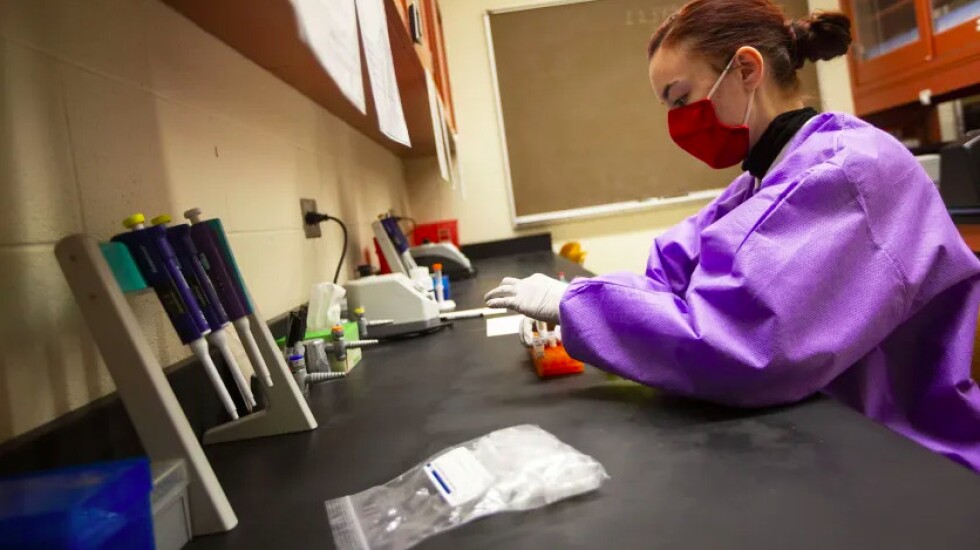
For most of the pandemic, public health officials have looked to sewer systems across Illinois to track COVID-19 levels in different communities — and now residents can take a look into that viral information pipeline themselves.
A new website launched Tuesday by the University of Illinois’ Discovery Partners Institute and the Illinois Department of Public Health offers a glance at how widely the virus is circulating through measurements taken at 75 wastewater treatment facilities statewide.
Leaders behind the Illinois Wastewater Surveillance System say the new info dashboard can help inform personal decisions on pandemic precautions.
“This helps you decide what you as an individual want to do based on the trends in your local area,” said Bill Jackson, the institute’s executive director. “If things are trending up, maybe you’re a little more eager to wear a mask or eat at home instead of at a restaurant. It doesn’t solve the problem, but it does give some insight.”
COVID-19 can be detected in a person’s waste well before they show symptoms, making wastewater facilities fertile testing ground for public health experts since the beginning of the pandemic in 2020.
Raw sewage samples are collected twice a week from the 75 facilities, analyzed at the University of Illinois Chicago and then sent to Argonne National Laboratory for genetic sequencing, which helps researchers identify variants.
Along the way, the U of I researchers can get a ballpark measure of how prevalent the virus is spreading in communities around each facility — a metric that’s increasingly important as more people use at-home COVID-19 tests that aren’t reported to the state.
Using the new website — iwss.uillinois.edu — residents can search by city or county for their local water treatment plant, see how high COVID readings have been as recently as a week ago and observe trends over the past year.
“It’s a cost-effective and consistent way of getting an idea of what going on in a community,” said senior project manager Laura Clements.
Experts have also started using the system to track strains of the flu and say that could soon be added to their dashboard, too.
Illinois Public Health Director Dr. Sameer Vohra called it “a great tool that can help detect and monitor COVID-19, the flu and other pathogens.
“This new website is designed to inform and educate residents of Illinois and will give them the ability to make informed decisions about how to protect themselves,” Vohra said in a statement.

As of Tuesday afternoon, the latest readings from the Stickney Water Reclamation Plant — the largest in the Chicago area — matched trends bearing out in the numbers previously shared by state health officials. Overall, cases and hospitalizations rose sharply between Thanksgiving and Christmas, but have remained relatively flat since then.
An average of 347 Chicagoans have received positive laboratory test results each day over the past week, a slight decrease from the previous week. Meanwhile, about 29 people with COVID have been admitted to Chicago hospitals per day, a slight increase.
“We are doing OK from a COVID perspective,” Chicago Public Health Commissioner Dr. Allison Arwady said during an online Q&A Tuesday. “We’re doing so much better than we were before we had vaccines and effective treatments.”
Only about 18% of eligible Illinoisans — that’s everyone 6 months or older — have gotten the latest booster shot.
For help finding one, visit vaccines.gov.







